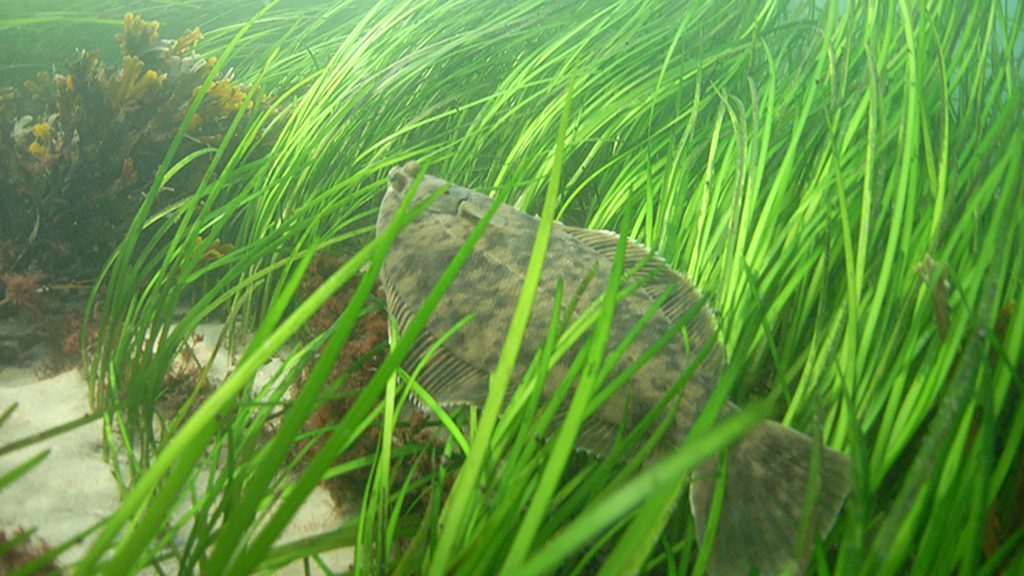Where Have All the Flounder Gone: Scientists use e-DNA to investigate

Resource managers have taken a range of conservation measures to improve the southern New England’s winter flounder population, including reduced catch limits and restrictions on dredging in their spawning habitat. Despite these steps, winter flounder stocks remain low. Scientists from the Massachusetts Division of Marine Fisheries (MA DMF) want to know why.
Eelgrass habitats serve as a nursery and protection from predators for juvenile winter flounder, who settle to the seafloor in early summer after hatching in the spring. However, nutrient loading and other environmental changes have damaged this critical habitat. Could the loss of eelgrass contribute to the inability of winter flounder stocks to rebound?
John Logan, a fisheries biologist at MA DMF, and his colleagues are using e-DNA to investigate whether greater numbers of juvenile flounder survive in embayments with eelgrass when compared to those that have lost their historical eelgrass habitats. What they find can guide the state resource managers as they prioritize eelgrass restoration in Massachusetts and develop strategies for increasing winter flounder populations.
Environmental-DNA (e-DNA) is a non-invasive tool that can be used for monitoring a wide variety of animals. Just as humans routinely slough skin cells and other biological identifiers, fish leave signature genetic material from mucus, feces, urine, scales or tissue fragments in the water. This DNA can be detected in water samples collected, filtered and analyzed by scientists to assess the presence and relative abundance of specific animals in a body of water.
With funding support from WHOI Sea Grant, the team from MA DMF collected water samples from estuaries on Cape Cod with and without eelgrass. They observed high e-DNA detections in the spring to early summer when the young-of-year have settled to the seafloor, but those detections declined dramatically during later summer and early fall months when juveniles are presumed to remain in the estuary. This was the case in estuaries with and without eelgrass, suggesting that estuaries in southern Cape Cod are only providing habitat from spring to mid-summer. The scientists don’t yet know the reason for the decline in numbers in the late summer, but it suggests the juveniles do not survive the summer or that they migrate out of the estuary.
“Ultimately understanding the cause of this pattern may lead to management changes to improve winter flounder survivorship and extend residency in estuarine habitats,” Logan reports.
